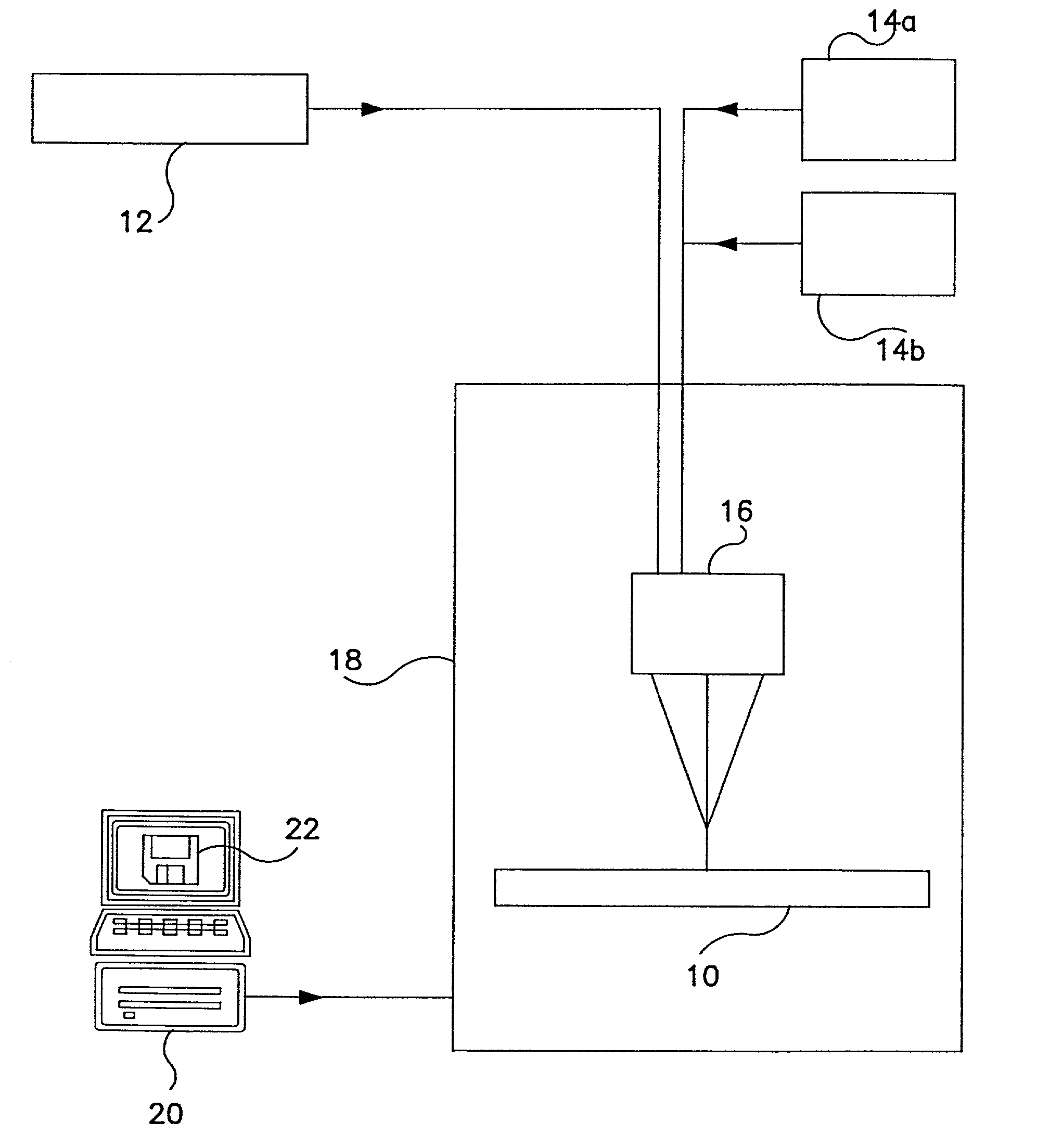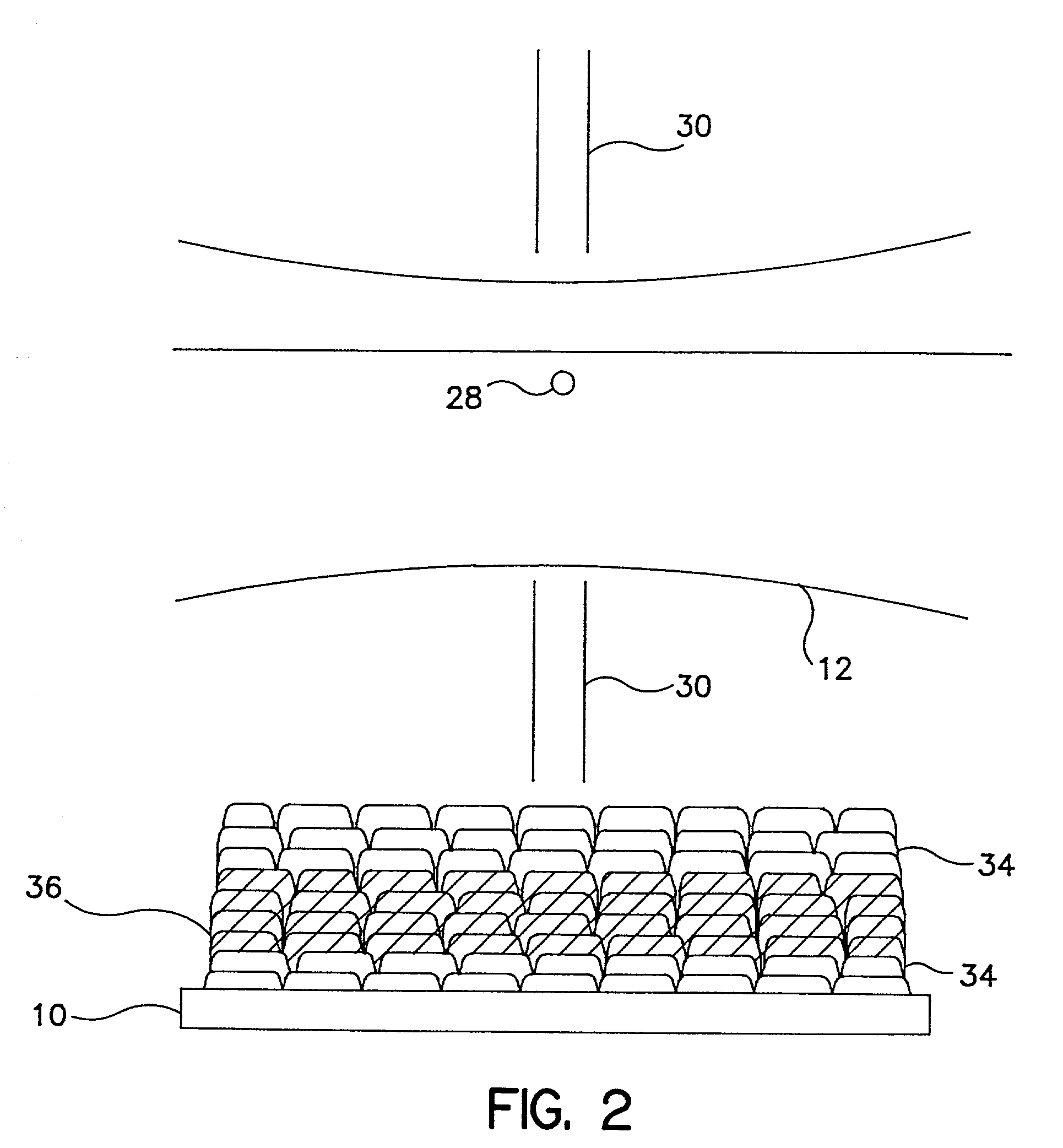Precision spray processes for direct write electronic components
a technology of electronic components and spray processes, applied in the direction of conductive pattern formation, manufacturing tools, solventing apparatus, etc., can solve the problems of limiting the operation of cladding, and reducing the size of the circuit board, so as to achieve high reflection, increase the time of flight, and prolong the flight path
- Summary
- Abstract
- Description
- Claims
- Application Information
AI Technical Summary
Benefits of technology
Problems solved by technology
Method used
Image
Examples
Embodiment Construction
[0097] There are numerous processing sequences that could effectively be used to create the direct write circuitry contemplated by invention methods. Based on the layout shown in FIG. 3, each of these devices, as well as the conductive lines 26, can be produced using a sequence of steps. An exemplary, albeit basic methodology for sequencing the process to create the circuitry of FIG. 3 is shown in FIGS. 4A-G.
[0098] In FIG. 4A, the test substrate 10 is shown with only a resistive material pattern 24a applied to the substrate. After the resistive material is applied, the process can be sequenced to then apply a conductive material. The conductive material is usually a metallic material and is used in essentially all of the components.
[0099] As shown in FIG. 4B, the conductive lines 26 are deposited in the desired pattern. A conductive material is also used to deposit the lower conductive pattern 38a for each of the capacitors, the lower coil conductor pattern 32a that serves to form t...
PUM
| Property | Measurement | Unit |
|---|---|---|
| power | aaaaa | aaaaa |
| distance | aaaaa | aaaaa |
| power | aaaaa | aaaaa |
Abstract
Description
Claims
Application Information
 Login to View More
Login to View More - R&D
- Intellectual Property
- Life Sciences
- Materials
- Tech Scout
- Unparalleled Data Quality
- Higher Quality Content
- 60% Fewer Hallucinations
Browse by: Latest US Patents, China's latest patents, Technical Efficacy Thesaurus, Application Domain, Technology Topic, Popular Technical Reports.
© 2025 PatSnap. All rights reserved.Legal|Privacy policy|Modern Slavery Act Transparency Statement|Sitemap|About US| Contact US: help@patsnap.com



